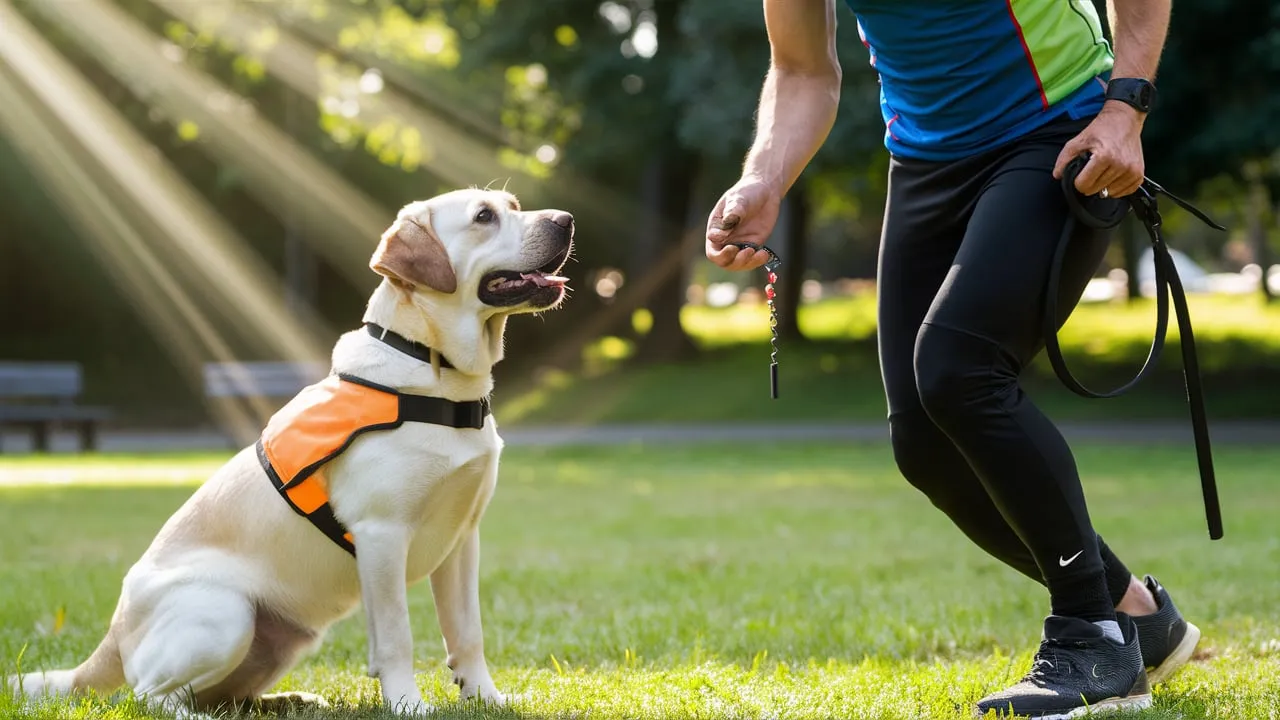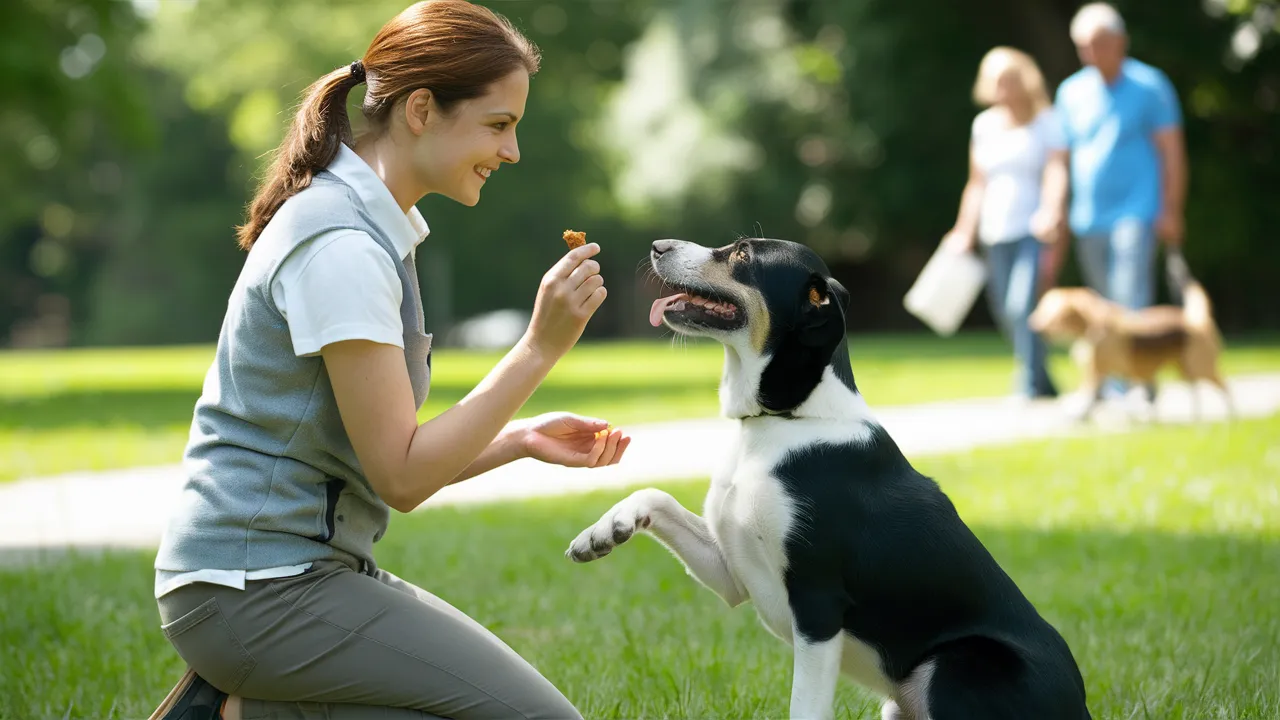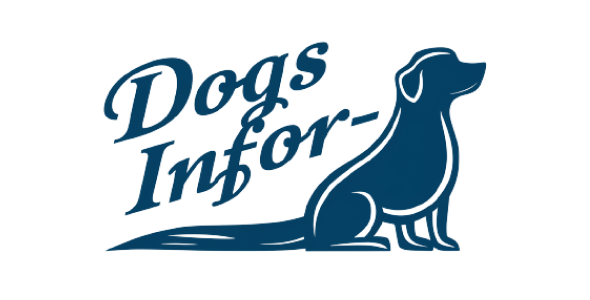Master essential Dog Training Commands! Learn how to teach your dog “sit,” “stay,” “come,” and more with clear instructions and expert tips by Dogs Infor!
The Importance of Dog Training Commands
Training your dog is more than just teaching them tricks; it’s about establishing clear communication, ensuring safety, and building a strong bond. Here’s why training commands are essential:
Communication and Understanding
- Shared Language: Training commands create a shared language between you and your dog, allowing for clear communication and understanding.
- Predictability: Consistent commands provide predictability and structure for your dog, reducing confusion and anxiety.
- Problem-Solving: Training commands equip you with tools to address behavioral issues, such as jumping, barking, or pulling on the leash.
Safety and Control
- Safe Interactions: Basic commands like “Sit,” “Stay,” and “Come” allow you to manage your dog’s behavior in various situations, ensuring safety for both you and your dog.
- Preventative Measures: Training commands can help prevent accidents and mishaps, such as running into traffic or approaching strangers aggressively.
- Emergency Situations: In emergencies, trained commands can help you control your dog and ensure their safety.
Building a Strong Bond
- Positive Reinforcement: Training through positive reinforcement strengthens the bond between you and your dog by rewarding desired behaviors.
- Mutual Respect: Training fosters mutual respect and understanding, creating a more harmonious relationship.
- Shared Activities: Training provides opportunities for shared activities and fun, strengthening the bond and creating lasting memories.

Essential Dog Training Commands
These six commands form the foundation of basic obedience training and are crucial for managing your dog’s behavior and ensuring their safety:
Sit
- Purpose: To teach your dog to sit on command, which is useful for controlling their energy, preventing jumping, and preparing them for other commands.
- How to Teach: Hold a treat near your dog’s nose and slowly move it over their head, encouraging them to sit. Once they sit, give them the treat and praise.
Stay
- Purpose: To teach your dog to remain in a specific position (usually sitting or standing) for a period of time. This is essential for safety and control, especially in busy or distracting environments.
- How to Teach: Once your dog is sitting, say “Stay” and hold your hand out in front of them. If they stay, give them a treat and praise. Gradually increase the duration of the stay.
Come
- Purpose: To teach your dog to come to you on command, which is crucial for safety, especially when they are off-leash or in potentially dangerous situations.
- How to Teach: Call your dog’s name and say “Come” while holding a treat. When they come to you, give them the treat and praise. Repeat this exercise in different environments.
Down
- Purpose: To teach your dog to lie down on command, which is helpful for calming them down, preventing jumping, and creating a relaxed state.
- How to Teach: Hold a treat near your dog’s nose and slowly move it towards the ground, encouraging them to lie down. Once they lie down, give them the treat and praise.
Leave It
- Purpose: To teach your dog to ignore something they are interested in, such as food, toys, or other distractions. This is important for preventing them from picking up potentially harmful items or getting into trouble.
- How to Teach: Hold a treat in your hand and say “Leave it” as you close your hand. If your dog doesn’t try to take the treat, give them another treat and praise. Repeat this exercise with various objects.
Heel
- Purpose: To teach your dog to walk calmly beside you on a leash, which is essential for safe and enjoyable walks and for maintaining control in public areas.
- How to Teach: Start by having your dog sit beside you. Hold the leash in your left hand and a treat in your right hand. Say “Heel” and take a step forward, rewarding your dog for staying beside you. Gradually increase the distance and duration of the walk.
Remember: Consistency, patience, and positive reinforcement are key to successful dog training.

Teaching Dog Commands Effectively
Training your dog effectively requires a combination of positive reinforcement, consistency, and patience. Here are some key principles to keep in mind:
Positive Reinforcement
- Reward Desired Behaviors: Focus on rewarding your dog for performing the desired behavior, rather than punishing them for mistakes.
- Use Treats, Praise, and Play: Offer treats, verbal praise, and playful interactions as rewards to motivate your dog.
- Timing is Key: Reward your dog immediately after they perform the desired behavior to create a clear association.
Consistency and Repetition
- Regular Training Sessions: Train your dog regularly, even if it’s just for a few minutes each day, to reinforce their learning.
- Clear and Consistent Commands: Use the same words and hand signals for each command to avoid confusion.
- Practice in Different Environments: Gradually introduce new environments and distractions to help your dog generalize their training.
Using Treats and Praise
- High-Value Treats: Use treats that your dog finds highly motivating to encourage them to perform the desired behavior.
- Vary Rewards: Mix up the types of rewards you use, such as treats, praise, and playtime, to keep your dog engaged.
- Praise Enthusiastically: Use enthusiastic praise to show your dog that you are happy with their performance.
Avoiding Punishment
- Focus on Positive Reinforcement: Punishment can create fear and anxiety in dogs, making them less likely to cooperate.
- Avoid Physical Correction: Physical punishment is never acceptable and can be harmful to your dog.
- Use Redirection and Time-Outs: If your dog is misbehaving, redirect their attention to a more appropriate activity or use a time-out to give them a chance to calm down.
Conclusion
Training your dog is essential for establishing clear communication, ensuring safety, and building a strong bond. If you are struggling to train your dog or if you encounter persistent behavioral challenges, seek professional advice from a certified dog trainer or behaviorist. They can provide personalized guidance, address specific issues, and help you develop a successful training plan for your dog.

Related Post
Training Golden Retriever: A Step-by-Step Guide
How To Train A Pitbull: A Guide to Positive Reinforcement